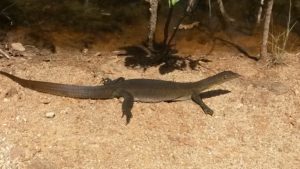The Top End of the Northern Territory is renowned for its large and thriving crocodile population, home to two native species: the saltwater (estuarine) crocodile and the freshwater crocodile.
1. Saltwater Crocodile (Crocodylus porosus)
-
Also known as “salties,” these are the largest living reptiles in the world, with some individuals growing up to 6 meters (20 feet) and weighing up to 1 tonne.
-
Saltwater crocodiles are found in both saltwater and freshwater environments, including rivers, billabongs, estuaries, and coastal waters throughout the Top End.
-
They are highly territorial, opportunistic predators, feeding on fish, birds, turtles, wild boar, buffalo, and occasionally livestock or anything else that enters their territory.
-
Saltwater crocodiles are considered extremely dangerous to humans due to their size, power, and ambush hunting style.
-
The Northern Territory is home to over 100,000 saltwater crocodiles, making it one of the densest populations in the world, particularly along the Mary River.

2. Freshwater Crocodile (Crocodylus johnstoni)
-
Known locally as “freshies,” these crocodiles are generally smaller and less aggressive than saltwater crocodiles, rarely growing larger than 3 meters (10 feet).
-
They are mostly found in freshwater habitats such as rivers, creeks, and billabongs, and are less likely to be found in saline environments.
-
Freshwater crocodiles primarily eat fish and birds and are not considered dangerous to humans unless provoked, though they can bite if threatened.
-
They can be distinguished from saltwater crocodiles by their slimmer snout and generally flatter body scutes.

Cultural and Environmental Significance
-
Crocodiles are of great cultural importance to Aboriginal and Torres Strait Islander peoples in the Northern Territory.
-
They also play a significant role in the local economy through tourism and regulated crocodile farming.
Safety and Management
-
The NT government operates active crocodile management and public education programs, including removal of problem crocodiles and clear signage about safe swimming areas.
-
Any body of water in the Top End may contain large and potentially dangerous crocodiles, so it is critical to always follow local warnings and “Be Crocwise”.
Summary Table
|
Species |
Size |
Habitat |
Aggressiveness |
Danger to Humans |
Key Features |
|---|---|---|---|---|---|
|
Saltwater Crocodile |
Up to 6m+, 1 tonne |
Fresh & saltwater, coast, rivers |
Very high |
Extreme |
Broad snout, large size, territorial |
|
Freshwater Crocodile |
Up to 3m |
Freshwater rivers, billabongs |
Low |
Low (if provoked) |
Slim snout, smaller, less aggressive |
The Top End is one of the best places in the world to observe crocodiles in the wild, but always exercise caution and respect for these ancient predators.


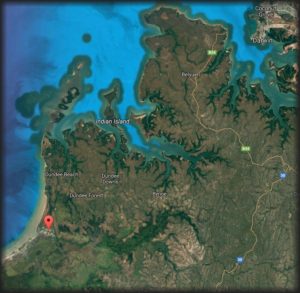 Australia’s Northern Territory is teeming with exotic birdlife, mammals, reptiles and marine life. The Finniss River and Bynoe Harbour included. The Finniss River coastal floodplain, about 70 km south-west of Darwin is dominated by seasonally inundated grassland and sedgeland with areas of paperbark open-forest. The Finniss River floodplain is also of international significance. This site is listed as a wetland of national significance in the Directory of Important Wetlands in Australia.
Australia’s Northern Territory is teeming with exotic birdlife, mammals, reptiles and marine life. The Finniss River and Bynoe Harbour included. The Finniss River coastal floodplain, about 70 km south-west of Darwin is dominated by seasonally inundated grassland and sedgeland with areas of paperbark open-forest. The Finniss River floodplain is also of international significance. This site is listed as a wetland of national significance in the Directory of Important Wetlands in Australia.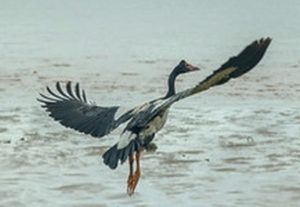 The area supports very large numbers of waterbirds, including more than 1% of the world’s populations of Magpie Geese and Pied Herons, and high densities of many other waterbird species. It supports important breeding activity by Saltwater Crocodiles, Magpie Geese and other waterbirds, and three
The area supports very large numbers of waterbirds, including more than 1% of the world’s populations of Magpie Geese and Pied Herons, and high densities of many other waterbird species. It supports important breeding activity by Saltwater Crocodiles, Magpie Geese and other waterbirds, and three 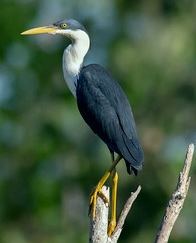 large waterbird breeding colonies are known to be located in paperbark swamps on the floodplain. Approximately five threatened birds and one threatened plant species also call this area home.
large waterbird breeding colonies are known to be located in paperbark swamps on the floodplain. Approximately five threatened birds and one threatened plant species also call this area home.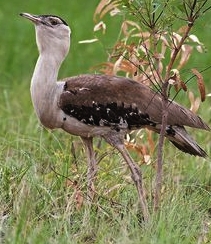 Masked Owl Tyto
Masked Owl Tyto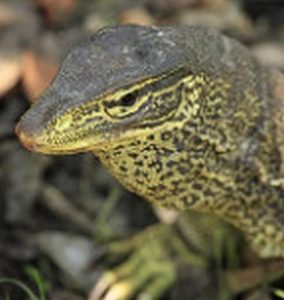
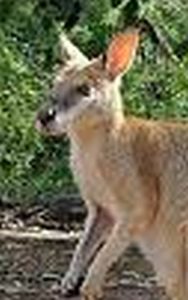 Wallaby are also very abundant.
Wallaby are also very abundant. Floating grass mats of the billabongs of the Finniss and Reynolds Rivers not destroyed by buffalo, provide an important habitat refuge and source of food for a range of fauna in the dry season, especially crocodiles. There are more crocodiles in the Northern Territory than anywhere else in the world.
Floating grass mats of the billabongs of the Finniss and Reynolds Rivers not destroyed by buffalo, provide an important habitat refuge and source of food for a range of fauna in the dry season, especially crocodiles. There are more crocodiles in the Northern Territory than anywhere else in the world.